This was published 1 year ago
Beyond Venice, these three European ports are standouts
It’s crude in more ways than one, but there’s no mistaking what the artist (presumably male and possibly pre-teen, but then again … ) scrawled on this Pompeii stone centuries ago.
Whoever it was, their phallic stamp makes us giggle across the generations but then, like all the other evidence of ancient lives at this extraordinary site, it renders us silent.
The power of Pompeii, the living museum to about 2000 city-dwellers who died in an estimated 15 minutes after Mount Vesuvius erupted in 79AD, lies in these glimpses of past lives, in the recognition of human frailty and artistry, and even in this everyday act of defiant bravado.
Pompeii has long been on our must-visit list. But when we have a chance to visit when the inaugral voyage on the Norwegian Viva docks in Salerno we are unsure. It’s August and it’s been one of the hottest, most crowded summers on record and I have visions of us struggling through crowds trying to hear a guide with a flag.
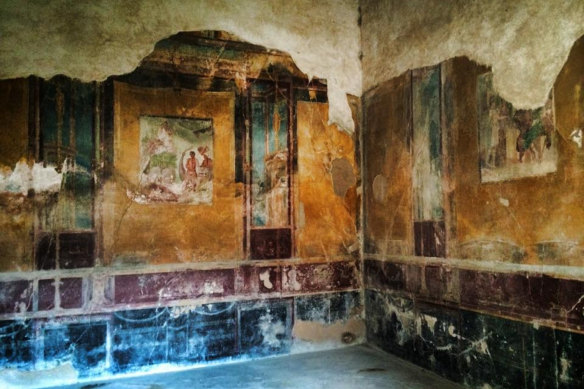
Wall paintings in a Roman villa in Pompeii, Naples, Italy.Credit: iStock
I needn’t have worried. We are dropped at the site early by bus, told where to hire an audio guide and spend hours in streets preserved forever as they were in 79AD. This way of seeing a site offers the best of both worlds – expert commentary but with the ability to wander down rabbit holes at your leisure. And there are many: the rows of houses with windows, doorways, stables and baths; the enormous tiered theatre with backstage areas and aisles for food sellers; the pottery urns and exquisite mosaics; the horse skeletons in a stable; floor tiles you might see in a 2023 home renovation TV show. Beauty and calamity side by side.
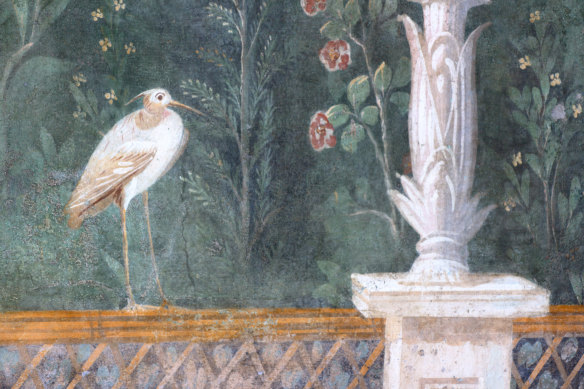
Fresco painting, Pompeii.Credit: iStock
But it’s the paintings on the walls that are especially poignant. A bird sits on a fence. Another sings by an olive grove. A barefoot man under a powder blue sky reaches for fruit from a tree. Each elicits a chill of recognition then poignancy at the thought of the subjects and those who painted them. They are us.
And lastly there’s the famed brothel with its erotic drawings depicting services on offer and the tiny rooms where many of the female workers (mostly slaves) lived and worked. And died.
We change tack and opt for a guided port visit when we glide into Split, Croatia. This place has a lot going on: remnants of brutal civilisations, recent war history, a beautiful coastline, incredible produce, a starring role in Game of Thrones and an Old Town built around the palace of the Christian-hating Roman Emperor Diocletian constructed in the (gulp) third century.
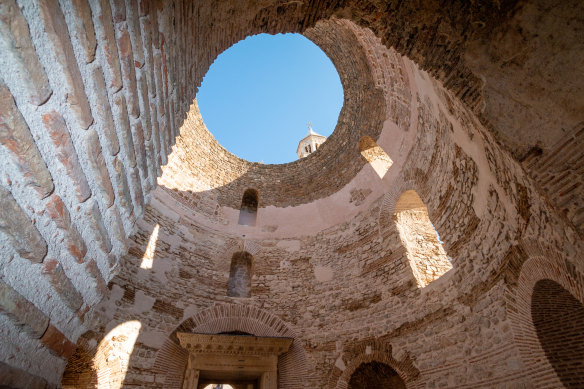
Oculus window in Diocletian’s Palace, Split.Credit: iStock
So it’s good to have someone to help make sense of it. We are on a full-day excursion from Norwegian Viva this time and are lucky enough to have a guide who paints in the countryside and the Old Town with anecdotes and facts that only a local would know. “What do those numbers painted on the walls mean? Something to do with the war?”
“No! It’s when we won the football!”
One section of Emperor Diocletian’s royal abode (known to Game of Thrones fans as a dragon stable) is still being uncovered. This, our guide says pointing to excavated layers, is where the Romans threw their food waste. “They dropped their dinner bones and vegetable peelings over centuries.” As she utters the words a real-life “gladiator” in full tourist-pleasing garb strolls past eating gelato as if to illustrate her point.
Later we again thank our stars for our guide when we are led past hungry crowds in the maze of ancient streets lined with bursting eateries and bars to a tucked away restaurant for what turns out to be one of the best meals of our voyage: risotto, white fish, spinach and a delicious salted dark chocolate mousse.
But if the gauge of a good port visit is how long you think about a place after leaving, then Trieste, which had not been on our radar at all before we arrived on a pre-cruise visit, is a standout. NCL is offering sailings from this beautiful city 160 kilometres from cruise-weary Venice.
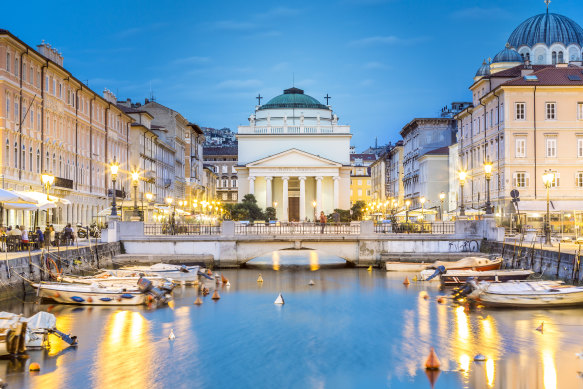
Saint Antonio Church at the end of Canal Grande, Trieste.Credit: iStock
It doesn’t take long before we are swept up in the Austro-Hungarian grandeur of its wide, restaurant-filled streets and the majestic Piazza Unita d’Italione, one of the few piazzas in Europe to face the water. Trieste has long been a home to coffee lovers (illy has its headquarters here) and writers, including James Joyce, who spent 16 years here and whose statue graces the Rosso Bridge over the Grand Canal.
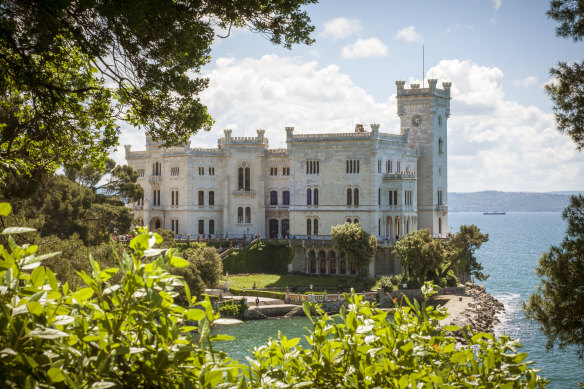
Miramare Castle (Castello di Miramare) seems to float on the Gulf of Trieste.Credit: iStock
In fact we’re told the idiosyncratic language used in Finnegans Wake may have roots in the Trieste dialect and that Joyce’s daughter, Lucia, (a tragic abandoned figure, but that’s another story) may have also influenced his work by her use of this dialect mixed with her own creative language. Another day, another rabbit hole, another fascinating port visit.
THE DETAILS
Cruise
A nine-day Greek Isles cruise on Norwegian Viva departs Trieste on August 22, 2024. It visits 10 ports, including Split, Istanbul, Santorini; from $4990 a person including beverage package, specialty dining, Wi-Fi, shore excursion. A 10-day Mediterranean Italy, Greece and Croatia cruise departs Rome (Civitavecchia), August 12, 2024, visiting 11 ports including Trieste; from $3825. See ncl.com
The writer was a guest of NCL.
Sign up for the Traveller Deals newsletter
Get exclusive travel deals delivered straight to your inbox. Sign up now.